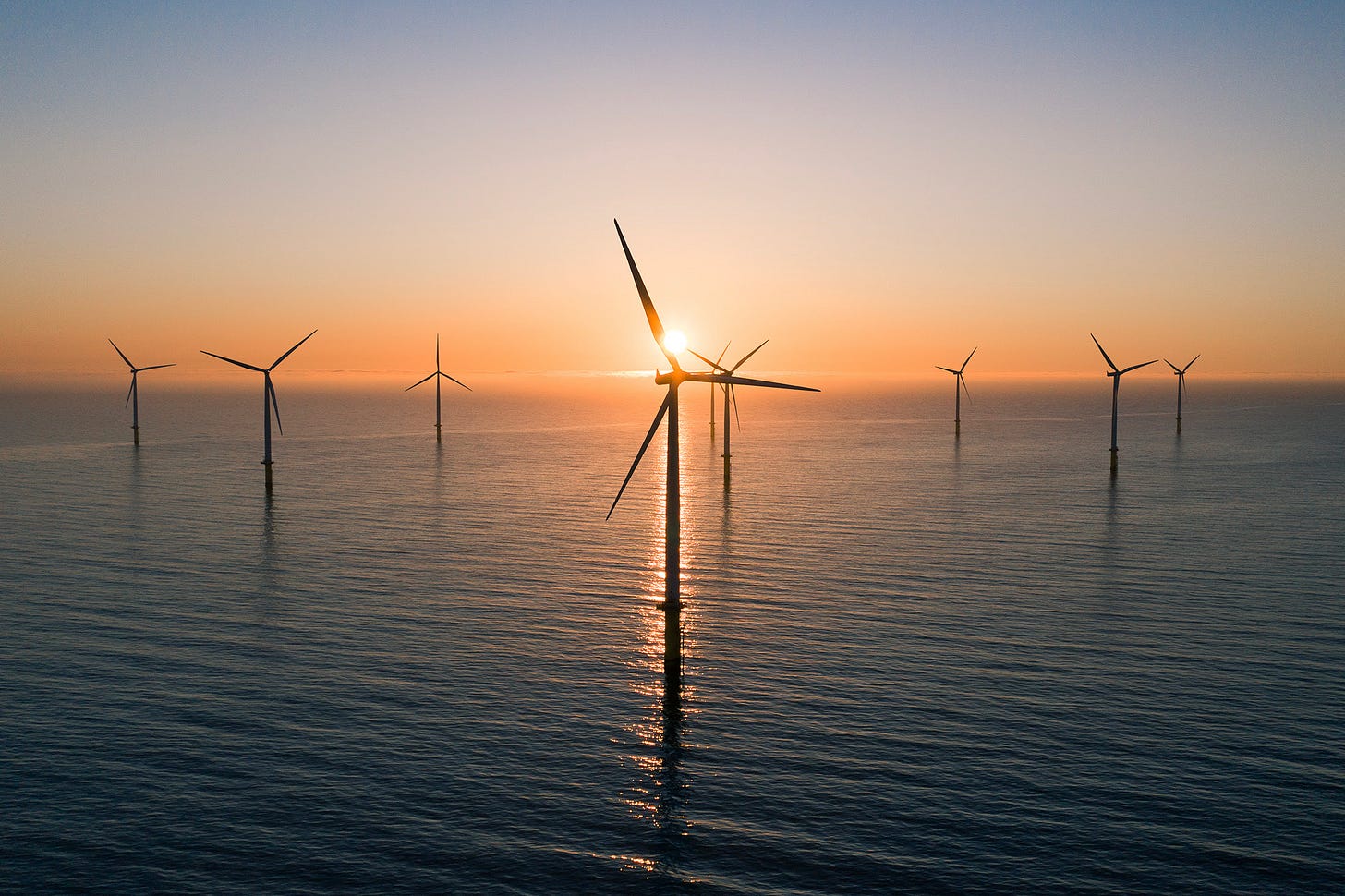WIND ENERGY: Reasons to be Optimistic, Bloomberg
In the race against climate change, governments around the world are pushing desperately ahead with the expansion of renewables. Wind energy is one of the great pillars of hope.
Reasons to be optimistic
By Verena Sepp
In the race against climate change, governments around the world are pushing desperately ahead with the expansion of renewables. Wind energy is one of the great pillars of hope.
Yet economic hurdles like rising costs and supply chain hiccups, as well as delayed approvals, kept the industry mired in crisis in recent years. Not to mention the recent public relations blow wind power took after debris from a busted wind turbine in the US washed up on the shore of Nantucket.
How has Vestas Wind Systems A/S, the veteran of the sector, overcome the larger macro-level challenges impacting the industry? Why is the managing partner of the offshore wind specialist Copenhagen Infrastructure Partners constantly optimistic? And how can we get emerging markets more involved in the energy transition?
Photographer: Abstract Aerial Art/Digital Vision
Every week on Bloomberg Green’s Zero podcast, Akshat Rathi invites guests to explore the tactics and technologies taking us to a world of zero emissions. Here are some recent episodes you might have missed.
Subscribe to Zero on Apple or Spotify to get new episodes each Thursday.
How Vestas fought its way to profitability
In the 1980s, focusing on wind energy seemed like a wild idea. Still, Vestas did exactly that by going all-in on making wind turbines. Over time, the Danish company became one of the biggest names in the field. Yet it’s been a constant fight to stay on top, and the volatile energy market has made the job of company CEO anything but easy. When Henrik Andersen first joined Vestas as a board member a decade ago, the company had just recorded its biggest loss. As the company brought stability back, Andersen was made CEO in 2019. But there was no time to rest. Another setback forced Andersen to take a bold, unprecedented step: Raising the prices of wind turbines. In this episode of Zero, Andersen explains what it took to convince shareholders to bear through some losses and why he doesn’t like the word “subsidy.”
Listen here: How Wind Company Vestas Achieved Profitability
The rock in the offshore-storm
As a hybrid between a fund and an energy company, Copenhagen Infrastructure Partners (CIP) has a unique role in the offshore wind industry. The company not only raises money and invests in wind farms, but it also builds its own projects. CIP’s co-founder Jakob Baruël Poulsen has been in the offshore wind industry for more than 20 years. He started his career at DONG Energies (later known as Orsted), which at the time benefited from a wave of government subsidies given to the sector. These days, in most countries, wind is a technology that can compete with other energy sources on a grand scale. As the managing partner of CIP, Poulsen has brought in big investors, including pension funds and insurance companies, to build major offshore wind projects. North America’s first commercial scale offshore wind project is just one example. Poulsen sees the business growing further. At the World Economic Forum meeting this year in Davos, he told Zero host Akshat Rathi why CIP wants to build artificial islands out in the sea to further speed up the deployment of offshore wind power. (Note: This was conversation was before the wind turbine incident at a Nantucket offshore farm, where CIP is one of the project’s developers.)
Listen here: How Energy Islands Supercharge Offshore Wind
Lots of profit on the table
Normally, it’s only years after a global climate conference that one can tell whether the participating countries were serious about their promises or not. COP28, however, delivered an achievement on its first day: The United Arab Emirates, the host country, pledged to put $30 billion into a new climate finance fund named Alterra. One of the firms that’s going to put some of those billions to work is Canada’s Brookfield Asset Management. About a tenth of the company’s managed money is invested in renewables and the climate transition. When Brookfield’s renewables division, Brookfield Renewable Partners, launched its $15 billion Global Transition Fund in 2021, it was the largest private fund of its kind in the world. Connor Teskey, chief executive officer of Brookfield Renewable Partners, said he has no doubt that the asset class will see significant growth rates in the future. In this episode of the Zero podcast he also explains which three emerging markets offer “tremendous opportunity.”
Listen here: Brookfield Is All In On Clean Energy
How can AI help?
Depending on who you ask, AI is either going to save the world or end it. While the technology’s capacity for data-crunching and problem-saving can make it easier to optimize power grids, artificial intelligence is also energy intensive. For all of these reasons, Priya Donti, a professor of electrical engineering and AI at the Massachusetts Institute of Technology, decided to found Climate Change AI. The group brings together scientists from different fields to identify climate applications for artificial intelligence, and funds projects tackling everything from sustainable farming practices to algorithmic heating and cooling systems in buildings. Donti sat down with Zero host Akshat Rathi to talk about some of the projects the group is getting behind, and why it’s in everyone’s interest to actively shape AI’s development.
Listen here: Searching For Climate Solutions in the AI Hype



Great AI + climate change 2 phantoms chasing unicorns. What happens in the coldest part of the winter and the wind doesn’t blow? Or it’s too cold and you need diesel generators to warm your windmills?
https://robertbryce.substack.com/p/breaking-wind?utm_medium=ios